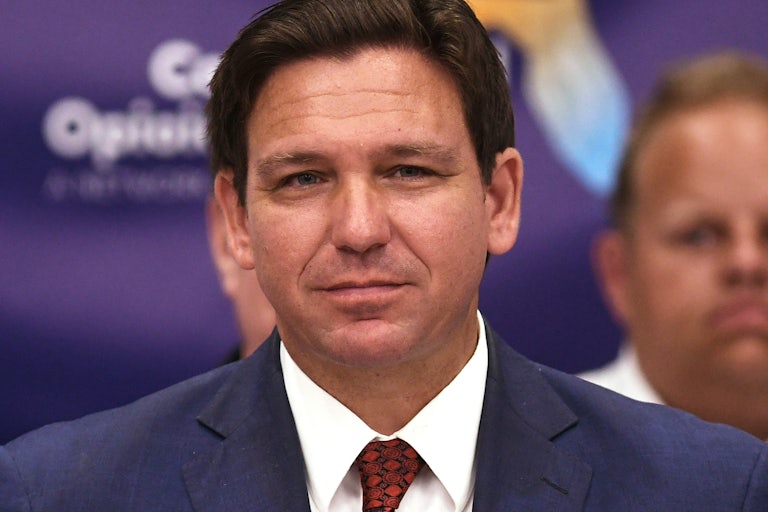Tennessee Republicans Are Trying to Expel Three House Democrats for Siding With Kids on Gun Control
The Democrats have already been stripped of their committee assignments.

Tennessee Republicans are pushing to expel State Representatives Justin Jones, Justin Pearson, and Gloria Johnson for the bold act of standing in solidarity with thousands of children asking for more gun control after a mass shooting at a school in Nashville last week.
Earlier Monday, the Democratic trio were stripped from their committee assignments, and their membership IDs were shut off. On Monday evening, Republicans officially filed resolutions to expel the three. The vote is set to come Thursday. Given the balance of power, if every Republican goes along with the farce, the representatives will likely be removed, resulting in the first partisan expulsion of lawmakers in Tennessee history.
On Monday, thousands of Nashville students staged a walkout to demand stronger gun control laws in the aftermath of a shooting at Covenant School that left three children and three adults dead. The students marched to the state Capitol building, leading chants and singing songs, with one student simply saying, “We all just want to live through high school.”
The huge walkouts followed similar mass action by thousands of people rallying at the Tennessee State Capitol last Thursday for stronger gun control laws.
Throughout the protests, students and parents were supported by Tennessee lawmakers who actually cared about their constituents. Tennessee Republicans are voting to punish them, on the basis that the trio walked up to the well of the House during the Thursday protest, which violated “rules of decorum.”
The lawmakers say they decided to do so after being repeatedly silenced by House Speaker Cameron Sexton.
“Our mics were cut off throughout the week whenever we tried to bring up the issue of gun violence,” Jones told local outlet WKRN. “When I went outside to support those protesting the Speak cut off my voting machine—the first time I’ve ever seen that happen. The Speaker refused to let us talk during welcoming and honoring to welcome our constituents—the thousands gathered outside the Capitol building.”
NOW: Surrounded by advocates and protestors in the Tennessee Capitol : @brotherjones_ “the voice of the people will never be silenced. This is what democracy looks like.”
— Olivia Julianna 🗳 (@0liviajulianna) April 3, 2023
KEEP CALLING. KEEP PEACEFULLY GOING TO THE CAPITOL
615-741-2343 pic.twitter.com/MV3xcRZmoI
Sexton has called the trio’s walk up to the well an “insurrection”—an inane comparison, both when considering the motivations of the gun control protests versus the January 6 attacks, and moreover given that no one in Nashville tried harming public property or people’s lives as rioters did on January 6.
Jones accused Sexton of spending “more time on Twitter this weekend talking about a fake insurrection than he did about the deaths of six people including 9-year-old children.”
With this vote, local Republicans are responding in mere hours to lawmakers standing alongside kids begging to not be shot. On actual gun control, things look very different. In 2021, Governor Bill Lee signed a bill allowing people to openly carry handguns without permits (and since then, state Republicans have been looking to expand the ability to people as young as 18, and for any firearm, not just handguns). And in 2020, Republicans shut down a red flag law that in fact could have stopped the Covenant School shooter.
Meanwhile, there have been 377 school shootings nationwide since 1999 (the year of the Columbine High School massacre). Republicans have done nothing in those 24 years.
“This is not what democracy looks like. We are elected to serve our constituents,” said Representative Jones. “I’m the youngest Democratic lawmaker here—the most diverse district—and by shutting me down, they’re shutting down the voice of my constituents.”
Perhaps Republicans are punishing the lawmakers who stood with the children out of disdain for gun control as policy, or in annoyance at the pesky kids asking to not be killed in school. Or perhaps they are doing it to stamp out any expectation of lawmakers actually doing their job and caring about people.
This post has been updated.









